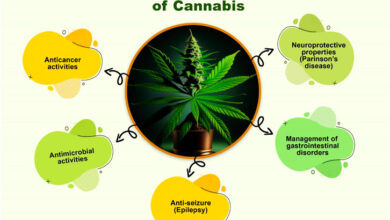What if Bad Design Isn’t the Problem — But Safe Design Is?

There’s a four-letter word that rarely shows up in creative briefs, yet silently kills more packaging concepts than Comic Sans ever did:
Safe.
Not bad. Not off-brand. Just safe.
The kind of design that “looks fine,” “feels professional,” and “won’t upset anyone.”
But also?
Won’t excite anyone.
Won’t get shared.
Won’t make someone reach across the shelf and say, “I have to try this.”
Safe design is polite. It blends in. But you’re not here to blend in.
If you’re a small business owner, creative strategist, or packaging designer, here’s the real talk: Safe design is often more dangerous than risky design. It whispers, “Don’t worry, you won’t stand out.” And in a saturated market, not standing out = disappearing.
The Real Threat Isn’t Bad Taste — It’s Invisible Branding
We’ve all seen packaging disasters.
Fonts gone wild. Color palettes from another century.
Designs that scream “I made this in Microsoft Paint in 2003.”
But those aren’t the brands we fear.
They’re at least trying something.
The real heartbreak is walking down an aisle—or scrolling a grid—and seeing dozens of products that look like they came out of the same beige-factory design template. Same serif font. Same neutral tones. Same whisper of a logo in the corner.
They aren’t bad. They’re just…invisible.
And invisible doesn’t sell.
“But We Don’t Want to Alienate Anyone”
Understandable. You want your product to feel approachable, trustworthy, timeless.
But timeless doesn’t mean lifeless.
And trustworthy doesn’t mean boring.
When you play it too safe, you’re not avoiding risk—you’re avoiding identity. You’re muting every signal that says, this brand has a point of view.
Brands that move people—the ones that boost sales without shouting—are rarely designed to “appeal to everyone.”
They’re designed to resonate with someone deeply.
So if your packaging feels “safe,” it might be time to ask:
Who are we trying to please?
And at what cost?
The Sweet Spot: Confident, Not Chaotic
Let’s be clear: “bold” doesn’t mean throwing neon on everything and switching to a grunge font.
It means owning your perspective. Leaning into an idea instead of sanding off its edges.
Here’s what that could look like in packaging:
- A cereal brand using hand-drawn punk zine aesthetics to talk about fiber
- A wellness product designed like a Japanese convenience store snack
- A candle in packaging that looks like a noir movie poster
These aren’t just containers. They’re cultural references. They feel specific.
And specific sells.
Good Printing Makes Bold Ideas Possible
One common reason brands play it safe? They assume bold designs won’t translate in production. Maybe your label has intricate textures. Or your pouch needs metallic inks. Or the print requires precision layering.
That’s where a professional printer isn’t just a vendor—they’re your secret weapon.
Great printers don’t just execute—they collaborate. They guide you through what’s feasible, what’s cost-effective, and what’ll actually look like your mockup when it’s in someone’s hand.
Too many indie brands pull back their design ambition because they haven’t found the right production partner. Don’t make that mistake.
When you’ve got an idea that makes you nervous (in a good way), talk to a professional printer and get a custom quote. Sometimes the bold move isn’t as expensive—or complex—as you think.
The Myth of “Timeless”
Let’s unpack something: when people say they want a “timeless” design, what they usually mean is “not trendy.”
Fair.
But timeless doesn’t mean “forgettable.”
The Coca-Cola logo? Bold. Distinct. Absolutely not safe.
Apple packaging? Simple, yes—but deeply intentional and theatrical.
Glossier? Clean, but never dull. There’s edge in their pink.
So ask yourself: is your design truly timeless? Or is it just afraid to choose?
A Packaging Designer’s Confession
One of the hardest lessons I had to learn as a packaging designer:
When a client says “We want something clean and simple,” what they often mean is “We want something we’ve already seen before.”
And when you deliver something new—something that gives them goosebumps but also makes them a little nervous—they hesitate.
That’s okay. That means you’re on to something.
Here’s the difference between good design and great design:
- Good design solves a problem.
- Great design creates emotion.
You can’t generate emotion by playing it safe. You generate emotion by being brave with your choices.
Take the Risk (Your Audience Will Reward You)
Look at the brands currently dominating social feeds:
They aren’t all high-budget giants. Many are scrappy indie outfits with gutsy visuals and packaging that owns its weird.
These brands don’t just get photographed. They get remembered.
And the best part? When your design has a pulse, it invites your audience into something bigger than a product—it invites them into a world.
So if your packaging feels too safe, ask yourself:
- What part of this feels generic?
- What part feels “already done”?
- What’s one element I could push further—color, type, voice, material?
And then: get it printed. Test it. Touch it. Try it.
You might be surprised how a daring pouch, label, or box becomes the tipping point that boosts sales in a way no ad ever could.
Final Takeaway: Safe Is a Strategy—But It’s Rarely the Winning One
You didn’t start your business to be wallpaper.
You started it to create something that mattered. Something that stood out.
So let your packaging reflect that spirit.
Work with a professional printer who can execute your ideas with integrity.
Get a custom quote and explore materials and finishes that elevate your concept.
Push the design just 10% bolder than feels comfortable.
Because in the war for attention, safe isn’t neutral. It’s invisible.
And invisible doesn’t win.



